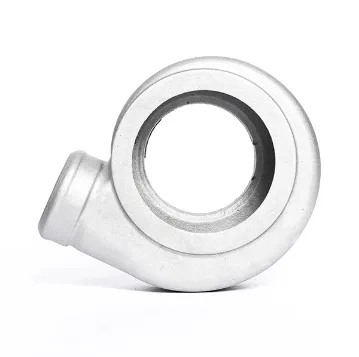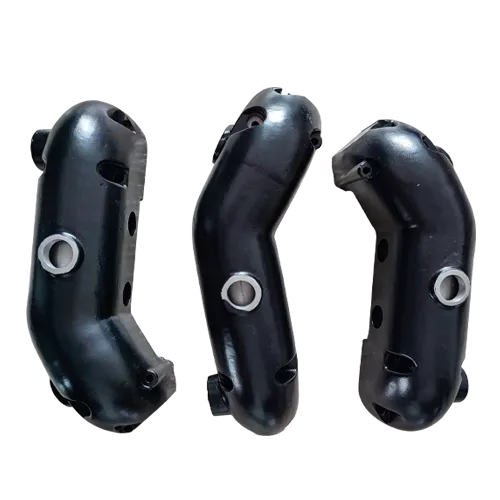Mobile:+86-311-808-126-83
Email:info@ydcastings.com
German
Precision Pressure Die Casting Components Aluminum Parts Experts
- Introduction: Precision in Pressure Die Casting Components
- Unveiling the Technical Advantages of Modern Die Casting
- Comparative Analysis: Performance Metrics Across Top Manufacturers
- Designing Custom Solutions for Complex Engineering Needs
- Material Focus: Innovations in Aluminium Die Casting
- Real-World Application Scenarios Driving Industry Evolution
- Final Thoughts on Selecting Pressure Die Casting Components

(pressure die casting components)
Introduction: Precision in Pressure Die Casting Components
Pressure die casting components form the backbone of modern industrial manufacturing, delivering exceptional dimensional accuracy for high-volume production. This metal forming process injects molten alloys under extreme pressures ranging from 1,500 to 25,000 psi into reusable steel molds. Automotive giants leverage this technology for 65% of engine block production due to its capacity to maintain tolerances within ±0.002 inches per inch. The aerospace sector similarly depends on lightweight pressure die casting of aluminium for structural airframe components where weight reduction directly impacts fuel efficiency.
Unveiling the Technical Advantages of Modern Die Casting
Pressure die casting delivers unparalleled production efficiencies with cycle times as brief as 15 seconds for small components. Surface finishes achieve 1-2 μm Ra without secondary machining operations. This process reduces material waste by 95% compared to CNC machining, while producing tensile strengths up to 310 MPa when using advanced aluminum-silicon alloys. Structural integrity testing confirms pressure die casting components
withstand fatigue cycles exceeding 10^7 at 40% yield strength. Additional benefits include seamless integration of fastening features and thermal management properties essential for electronic enclosures.
Comparative Analysis: Performance Metrics Across Top Manufacturers
| Manufacturer | Maximum Clamping Force (tons) | Dimensional Tolerance (±mm) | Production Volume Capacity | Material Options |
|---|---|---|---|---|
| Dynacast International | 2,800 | 0.05 | 10M+ units annually | Zn, Al, Mg alloys |
| Gibbs Die Casting | 4,400 | 0.08 | 5M+ complex parts | Specialized Al-Si alloys |
| Rockman Industries | 3,300 | 0.10 | 8M+ automotive parts | A380, ADC12 aluminum |
Equipment capabilities directly correlate with component quality metrics. High-pressure machines exceeding 3,000 tons produce structural automotive parts with wall thicknesses down to 1.2mm while maintaining critical mechanical properties. Production throughput analysis reveals manufacturers with automated decoring systems achieve 40% higher output volumes compared to semi-automated facilities.
Designing Custom Solutions for Complex Engineering Needs
Complex geometries featuring undercuts, hollow sections, and varied wall thicknesses necessitate advanced simulation-driven design processes. Flow analysis software minimizes turbulence during mold filling, reducing porosity rates below 0.2% in aerospace components. Recent prototyping for electric vehicle battery trays achieved 0.8mm wall sections using vacuum-assisted casting processes. Post-casting CNC machining integrates mounting surfaces with positional accuracies of ±0.012mm, while secondary anodizing provides corrosion resistance exceeding 1,000 hours in salt spray tests.
Material Focus: Innovations in Aluminium Die Casting
Pressure die casting of aluminium has advanced significantly with A380 alloy formulations achieving thermal conductivity of 96 W/m-K and electrical conductivity exceeding 40% IACS. Enhanced eutectic silicon modification in AlSi10Mg alloys delivers elongation rates up to 10% while maintaining UTS values over 320 MPa. Heat treatment innovations including T5 and T7 tempers optimize component performance, improving hardness to 100 HB with dimensional stability across temperature ranges from -40°C to 250°C. Surface treatment methodologies like micro-arc oxidation create ceramic layers up to 200μm thick for extreme wear resistance applications.
Real-World Application Scenarios Driving Industry Evolution
Automotive transmission housings demonstrate the process efficiency with complex oil galleries cast net-shape at 45-second cycle times. BMW's electric drive units utilize die-cast aluminium components achieving 30% weight reduction versus steel assemblies without compromising NVH performance requirements. Medical device manufacturers produce MRI-compatible components with specialized zinc alloys meeting USP Class VI biocompatibility standards. The renewable energy sector increasingly adopts die-cast aluminum junction boxes certified for IP67 protection with thermal dissipation rates that support 5MW inverter systems.
Final Thoughts on Selecting Pressure Die Casting Components
Superior pressure die casting components deliver unmatched cost efficiencies in high-volume applications requiring dimensional stability across production batches exceeding 100,000 units. Critical evaluation of manufacturer capabilities must prioritize thermal management expertise in mold design for aluminum alloys and documented conformance to IATF 16949 quality standards. Emerging metal matrix composites and advanced vacuum die casting techniques will further expand design possibilities for precision pressure die casting parts across electrification and aerospace sectors in the coming decade.

(pressure die casting components)
FAQS on pressure die casting components
Q: What are pressure die casting components?
A: Pressure die casting components are metal parts created by forcing molten metal into reusable steel molds under high pressure. This process yields complex, high-precision shapes with excellent dimensional accuracy. Common examples include automotive parts, hardware fittings, and electronic enclosures.
Q: What key advantages does pressure die casting offer?
A: Key advantages include exceptional production speed for high volumes and consistent part quality with tight tolerances. It also minimizes post-casting machining requirements and generates durable components with fine surface finishes.
Q: Why is pressure die casting popular for aluminium components?
A: Pressure die casting efficiently handles aluminium’s fluidity and solidification properties, enabling intricate thin-walled designs. It leverages aluminium’s lightweight strength and corrosion resistance, making it ideal for automotive and aerospace applications while ensuring cost-effective mass production.
Q: What design complexities can pressure die casting achieve?
A: Pressure die casting can produce intricate geometries like internal channels, thin ribs, and complex contours in a single operation. It achieves near-net shapes with minimal draft angles, reducing the need for secondary operations and allowing exceptional detail replication.
Q: How does pressure die casting improve manufacturing efficiency?
A: This process rapidly produces thousands of identical parts using reusable dies, significantly lowering per-unit costs. It features short cycle times, reduces material waste through controlled injection, and automates steps like trimming and cooling to streamline workflows.











